Mitsubishi 4DQ5 Repair Manual
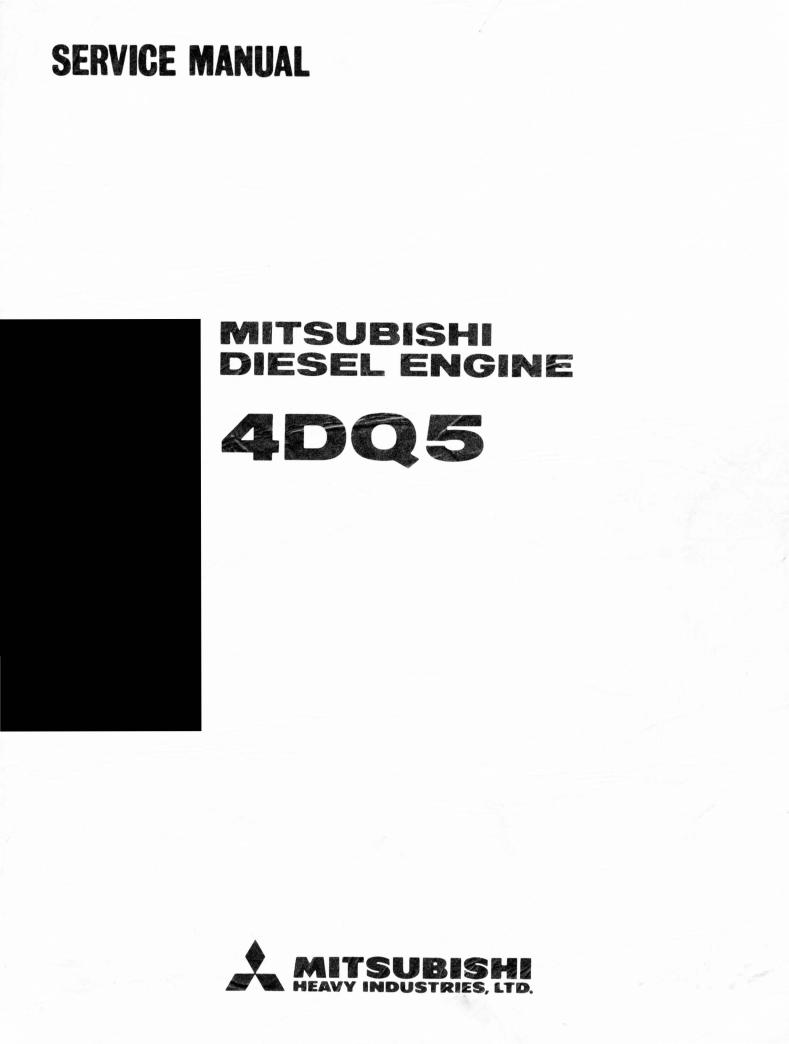
INDEX |
|
GENERAL |
|
MAJOR DATA AND SPECIFICATIONS |
5 |
DISASSEMBLY |
8 |
INSPECTION AND REPAIR .......................................... |
16 |
REASSEMBLY |
37 |
LUBRICATING SYSTEM |
49 |
COOLING SYSTEM |
52 |
FUEL SYSTEM |
56 |
ELECTRICAL SYSTEM .............................................. |
71 |
BENCH TEST |
87 |
MAINTENANCE STANDARDS |
89 |
SEALANT APPLICATION DATA |
102 |
TIGHTENING TORQUE ............................................. |
103 |
SPECIAL SERVICE TOOLS |
105 |
TROUBLESHOOTING CHART |
110 |

GENERAL
1. Major component parts
1-1 Left-hand side view
402500
1-Water pump |
10-Fuel injection nozzle |
19-Cran kcase |
2-Fan |
11-0il filler cap |
20-Flywheel housing |
3-Fan belt |
12-Fuel injection pipe |
21-0il pan |
4-Fuel injection pump |
13.Rocker cover |
22-Drain plug |
5-Fuel feed pump |
14-lntake manifold |
23-Control rack stopper |
6-0il pipe |
15-Fuel leak-off pipe |
24-Governor |
7-Fuel inlet connector |
16-Cylinder head |
25-Starter |
8-Fuel feed pipe |
17-Adjusting lever |
|
9-Fuel filter |
18-Hanger |
|
- 1 -
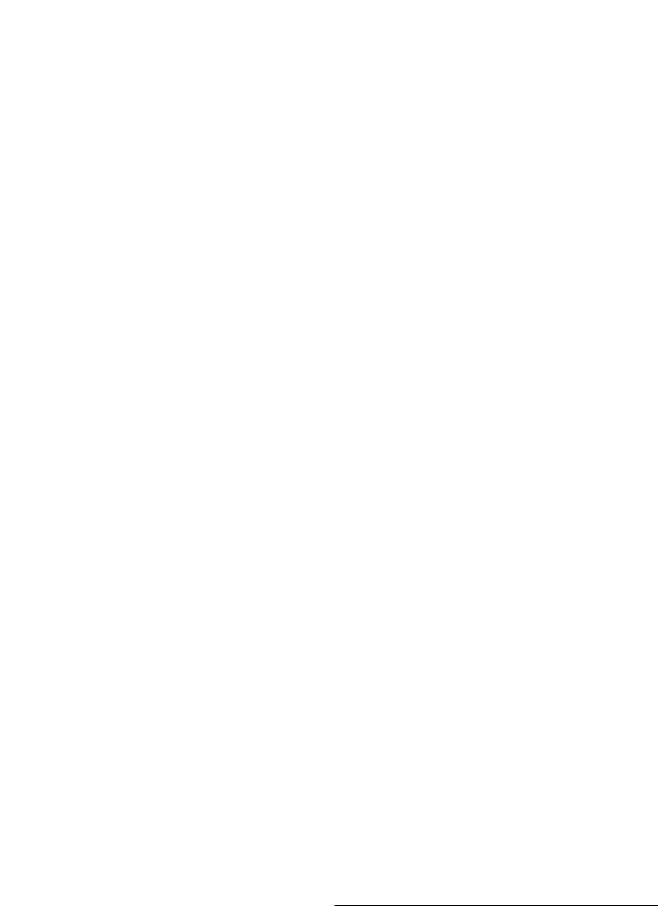
1-2 Right-hand side view
402501
l-Cylinder head |
9-0il filler cap |
l7-Alternator bracket |
|
2-Crankcase |
10-Exhaust manifold |
18-Timing gear case |
|
3-1 ndicator switch |
ll-Elbow |
19-0il level gauge |
|
4-Flywheel housing |
l2-Screw plug |
20 |
-0il pipe |
5-Rocker cover |
13-Water pump |
21 |
-0il bypass alarm switch |
6-0il filter |
14-Fan |
22 |
-0il pan |
7-Breather |
l5-Fan belt |
23-0il pipe |
|
8-0il filler |
16-Alternator |
|
|
- 2 -
1-3 Longitudinal sectional view
402502
1-Rocker cover |
10-Connecting rod |
19-Tappet |
|
2-Thermostat case |
11-Cran kshaft pu lIey |
20-Camshaft |
|
3-Thermostat |
12-Crankshaft gear |
21-Crankshaft |
|
4-Exhaust valve |
13-Timing gear case |
22-Flywheel |
|
5-lntake valve |
14-Rocker shaft bracket |
23-Flywheel housing |
|
6-Water pump |
15-Rocker shaft |
24 |
-0il strainer |
7-Piston |
16-Valve push rod |
25 |
-0il pan |
8-Camshaft gear |
17-Cylinder head |
26-Drain plug |
|
9-Fan |
18-Cran kcase |
|
|
- 3 -

1-4 Transverse sectional view
402503
1-Exhaust manifold |
9-0il strainer |
17-Cran kcase |
2-Piston |
10-Rocker arm |
18-Fuel injection pump |
3-Valve push rod |
11-Rocker cover |
19-Fuel feed pump |
4-Connecting rod |
12-Glow plug |
20-Starter |
5-Tappet |
13-Fuel injection nozzle |
21-Cra n kshaft |
6-Camshaft |
14-lntake manifold |
22-0il pan |
7-0il level gauge |
15-Fuel injection pipe |
|
8-0il pump |
16-Cylinder head |
|
-4-
MAJOR DATA AND SPECIFICATIONS
|
Engine model |
|
|
|
|
|
40Q5 |
|||||
|
|
|
|
|
|
|
|
|
|
|
|
|
|
|
|
Type |
|
|
|
|
|
Water-cooled, 4-stroke, swirl-combustion |
|||
|
|
|
|
|
|
|
|
chamber type diesel |
||||
|
|
|
|
|
|
|
|
|
|
|
||
|
|
|
|
|
|
|
|
|
|
|
|
|
|
|
|
No. of cylinders-arrangement |
|
|
|
4-in line |
|||||
|
|
|
|
|
|
|
|
|
|
|
|
|
|
|
|
Bore x stroke |
|
|
mm (in.) |
84 x 94 (3.307 x 3.701) |
|||||
|
|
|
Piston displacement |
cc(cuin.) |
2084 (127.l) |
|||||||
|
|
|
Compression ratio |
|
|
|
21 : 1 |
|
||||
|
|
|
|
|
|
|
|
|
|
|
|
|
|
|
|
Compression pressure |
kg/ cm 2 (p si) |
26 (369.7), min (at 150 ~ 200 rpm) |
|||||||
|
|
|
|
|
|
|
|
|
|
|
|
|
|
|
|
Firing order |
|
|
|
|
|
1 - 3 - 4 - 2 |
|
||
|
|
|
|
|
|
|
|
|
|
|
|
|
|
|
|
Direction of rotation |
|
|
|
Counterclockwise as viewed from flywheel side |
|||||
|
|
|
|
|
|
|
|
|
|
|
|
|
|
|
|
Burns (fuel) |
|
|
|
|
|
Grade No. 2D diesel fuel (ASTM specification) |
|||
|
|
|
|
|
|
|
|
|
|
|
|
|
|
|
|
Engine oil |
|
|
|
|
|
Class-CC or better (API service classification) |
|||
|
|
|
|
|
|
|
|
|
|
|
|
|
|
..a.I |
|
|
|
Overall length |
|
|
|
717.5 (28-1/4) |
|
||
|
|
|
|
|
|
|
|
|
|
|
||
|
Dimensions |
Overall width |
mm (in.) |
562 (22-1/8) |
|
|||||||
|
ca |
|
||||||||||
|
= |
|
|
|
|
|
|
|
|
|
|
|
|
|
|
|
|
Overall height |
|
|
|
629.5 (24-3/4) |
|
||
|
a.I |
|
|
|
|
|
|
|
||||
|
(.!) |
|
|
|
|
|
|
|
|
|
|
|
|
|
Weight, dry |
|
|
kg (lb) |
200 (441) |
|
|||||
|
|
|
|
|
|
|||||||
|
|
|
|
|
|
|||||||
|
|
|
|
|
|
|
|
|
|
|
|
|
|
|
|
Cylinder sleeves |
|
|
|
|
|
Dry type made of special cast iron |
|||
|
|
|
|
|
|
|
|
or integral water-jacket type |
||||
|
|
|
|
|
|
|
|
|
|
|
||
|
|
|
|
|
|
|
|
|
|
|
|
|
|
|
|
No. of piston |
Compression rings |
|
|
|
2 |
|
|||
|
|
|
|
|
|
|
|
|
|
|||
|
|
|
rings |
Oil ring |
|
|
|
1 (w/spring expander) |
||||
|
|
|
|
|
|
|
|
|
||||
|
|
|
|
|
|
|
|
|
|
|
|
|
|
|
|
Valve arrangement |
|
|
|
Overhead |
|||||
|
|
|
|
|
|
|
|
|
|
|
|
|
|
|
|
|
Intake valves |
Open at: |
|
|
|
30° BTDC |
|||
|
|
|
|
|
|
|
|
|
|
|||
|
|
|
Valve |
Close at: |
|
|
|
50° ABDC |
||||
|
|
|
|
|
|
|
|
|
||||
|
|
|
timing |
Exhaust valves |
Open at: |
|
|
|
74° BBDC |
|||
|
|
|
|
|
|
|
||||||
|
|
|
|
Close at: |
|
|
|
30° ATDC |
||||
|
|
|
|
|
|
|
||||||
|
|
|
|
|
|
|
|
|
|
|||
|
|
|
|
|
|
|
|
|
|
|
|
|
|
|
|
Valve clearance (both intake and |
mm (in.) |
0.25 (0.0098) |
|
||||||
|
|
|
exhaust valves) (cold) |
|
||||||||
|
|
|
|
|
|
|
|
|||||
|
|
|
|
|
|
|
|
|
|
|
|
|
|
|
|
Starter |
|
|
|
|
|
Electric |
|||
|
|
|
|
|
|
|
|
|
|
|
|
|
|
|
|
Fuel feed pump |
Model |
|
|
|
ND-EP/KS22A |
||||
|
|
|
|
|
|
|
|
|
|
|||
|
|
|
Cam lift |
mm (in.) |
6 (0.24) |
|
||||||
|
|
|
|
|
|
|
||||||
|
|
|
|
|
|
Model |
|
|
|
PES4A65B |
||
|
|
|
|
|
|
|
|
|
|
|
||
|
5 |
|
Fuel injection |
Plunger diam |
mm (in.) |
6.5 (0.256) |
|
|||||
|
|
|
|
|
|
|
|
|
||||
|
|
pump |
|
|
|
|
|
|
|
|
||
|
"til |
|
Plunger lead |
|
|
|
Right |
|||||
|
~ |
|
|
|
|
|
|
|
|
|
|
|
|
a:i |
|
|
|
Cam lift |
mm (in.) |
8 (0.31) |
|
||||
|
::I |
|
|
|
|
|
|
|
|
|
|
|
|
r- |
|
|
|
Model |
|
|
|
RUV (for prime power) |
|||
|
|
|
Governor |
|
|
|
||||||
|
|
|
|
|
|
|
|
|
|
|||
|
|
|
|
|
|
Type |
|
|
|
Centrifugal flyweight, all-speed |
||
|
|
|
|
|
|
|
|
|
||||
|
|
|
|
|
|
|
|
|
|
|
|
|
|
|
|
Fuel injection |
Type |
|
|
|
Throttle |
||||
|
|
|
|
|
|
|
|
|
|
|||
|
|
|
nozzles |
|
Type of nozzle holders |
Bosch CA 17SD |
||||||
|
|
|
|
|||||||||
|
|
|
|
|
|
|||||||
|
|
|
|
|
|
|
|
|
|
|
|
|
- 5 -

Engine model |
|
|
|
|
|
|
|
|
|
4DQ5 |
|
|||
|
|
|
|
|
|
|
|
|
|
|
|
|||
|
|
|
Type of nozzle tips |
|
|
|
|
|
|
|
Bosch ND-DNOSD21 |
|||
|
|
|
|
|
|
|
|
|
|
|
|
|
||
~ |
Fuel injection |
Spray hole diam |
mm (in.) |
|
|
|
1 (0.04) |
|
||||||
|
|
|
|
|
|
|
|
|
|
|
||||
|
|
|
|
|
|
|
|
|
|
|
||||
~ |
nozzles |
Spray angle |
|
|
|
|
|
|
|
|
0° |
|
||
~ |
|
|
|
|
|
|
|
|
|
|||||
'1:l |
|
|
|
|
|
|
|
|
120 +18 (1706 +146) |
|||||
= |
|
|
Injection pressure |
kg/cm 2 |
(psi) |
|||||||||
""- |
|
|
|
|
|
|
|
|
|
|
|
|
|
|
|
Fuel filter |
|
|
|
|
|
|
|
|
Paper-element type |
||||
|
|
|
|
|
|
|
|
|
|
|
|
|
||
|
|
|
Type |
|
|
|
|
|
|
|
|
Trochoid |
||
|
|
|
|
|
|
|
|
|
|
|
|
|
|
|
|
|
|
Speed ratio to crankshaft |
|
|
|
|
|
|
|
1/2 |
|
||
|
|
|
|
|
|
|
|
|
|
|
|
|
|
|
|
Oil pump |
Capacity at oil temp. |
|
|
|
|
|
|
|
|
|
|
||
|
|
|
50 ± 5°C (122 ± 9°F); |
liter (cu in.)/ |
|
8.37 (510.8), min/lOOO (pump rpm) |
||||||||
|
|
|
pressure 3 kg/cm 2 |
min/rpm |
|
|||||||||
e |
|
|
(42.7 psi) |
|
|
|
|
|
|
|
|
|
|
|
|
|
|
|
|
|
|
|
|
|
|
|
|||
|
|
At duty run |
|
|
|
|
|
3 - |
4 (42.7 - |
56.9) |
||||
III |
Oil pressure |
|
|
kg/cm |
2 |
(psi) |
|
|
|
|
|
|
||
>'". |
|
At idling |
|
|
1 - |
2 (14.2 - |
28.4) |
|||||||
~ |
|
|
|
|
|
|
|
|
|
|
|
|
|
|
'" |
|
|
|
|
|
|
|
|
|
|
|
|
|
|
|
|
|
|
|
|
|
|
|
|
|
|
|
||
.sa |
Oil filter |
|
|
|
|
|
|
|
|
Paper-element type |
||||
= |
|
|
|
|
|
|
|
|
||||||
~ |
|
|
|
|
|
|
|
|
|
|
|
|
|
|
.. |
|
|
|
|
|
|
|
|
|
|
|
|
|
|
'" |
|
|
Type |
|
|
|
|
|
|
|
Piston-valve |
|||
.~ |
|
|
|
|
|
|
|
|
|
|||||
3 |
Relief valve |
|
|
|
|
|
|
|||||||
Valve opening |
kg/ cm2 |
(psi) |
3 ± 0.2 (42.7 ± 2.8) |
|||||||||||
|
|
pressure |
||||||||||||
|
|
|
|
|
|
|
|
|
|
|
|
|
||
|
|
|
|
|
|
|
|
|
|
|
|
|
|
|
|
Refill capacity |
Oil pan |
liter |
|
|
|
|
|
|
|
6.5 (1. 7) |
|
||
|
|
|
|
|
|
|
|
|
|
|
||||
|
Oil filter |
(U.s. gal) |
|
|
|
0.7 (0.18) |
||||||||
|
|
|
|
|
|
|||||||||
|
|
|
|
|
|
|
|
|
|
|
||||
|
|
|
|
|
|
|
|
|
|
|
|
|
||
|
Oil bypass |
Type |
|
|
|
|
|
|
|
|
Piston-valve |
|||
|
|
|
|
|
|
|
|
|
|
|
|
|||
|
Valve opening |
|
|
|
|
|
|
|
|
|
|
|||
|
valve |
kg/ cm |
2 |
(psi) |
0.8 - |
1.2 (11.4 - 17.1) |
||||||||
|
|
|
pressure |
|
||||||||||
|
|
|
|
|
|
|
|
|
|
|
|
|
||
|
|
|
|
|
|
|
|
|
|
|
|
|||
|
|
|
Type |
|
|
|
|
|
|
|
Centrifugal type |
|||
|
|
|
|
|
|
|
|
|
|
|
|
|
|
|
|
Water pump |
Speed ratio to crankshaft |
|
|
|
|
|
|
|
1.3 |
|
|||
|
|
|
|
|
|
|
|
|
|
|
|
|||
|
|
|
Capacity |
liter (cu in.)/ |
|
105 (6408)/3900 (pump rpm) |
||||||||
|
|
|
min/rpm |
|
||||||||||
|
|
|
|
|
|
|
|
|
||||||
|
|
|
|
|
|
|
|
|
|
|
|
|
|
|
|
|
|
Type |
|
|
|
|
|
|
|
|
Wax |
|
|
e |
|
|
|
|
|
|
|
|
|
|
||||
Thermostat |
Valve opening temperature |
|
|
|
|
|
|
76.5 ± 2°C (169.7 ± 3.6°F) |
||||||
III |
|
|
|
|
|
|
|
|
|
|
|
|
|
|
|
|
Valve lift temperature |
|
|
|
|
|
|
|
90 ± 2°C (194 ± 3.6°p) |
||||
>'". |
|
|
|
|
|
|
|
|
|
|||||
~ |
|
|
|
|
|
|
|
|
|
|
|
|
|
|
'" |
|
|
|
|
|
|
|
|
|
|
|
|
|
|
|
|
|
|
|
|
|
|
|
|
|
|
|
||
|
|
Type |
|
|
|
|
|
|
|
Circular-arc pusher type |
||||
|
|
|
|
|
|
|
|
|
||||||
.Sf |
|
|
|
|
|
|
|
|
|
|||||
'0 |
|
|
No. of blades |
|
|
|
|
|
|
|
|
6 |
|
|
|
|
|
|
|
|
|
|
|
|
|
||||
0 |
Fan |
|
|
|
|
|
|
|
|
|
|
|
|
|
U |
|
|
|
|
|
|
|
|
|
|
|
|
||
|
|
|
Outside diameter |
mm (in.) |
|
|
|
380 (15) |
||||||
|
|
|
Ratio to crankshaft speed |
|
|
|
|
|
|
|
1.3 |
|
||
|
|
|
|
|
|
|
|
|
|
|
|
|
||
|
Drive belt |
Type |
|
|
|
|
|
|
|
|
Low-edge cog B |
|||
|
|
|
|
|
|
|
|
|
|
|
|
|||
|
|
|
No. of belts |
|
|
|
|
|
|
|
|
1 |
|
|
|
|
|
|
|
|
|
|
|
|
|
|
|
|
|
|
Refill capacity (engine water jacket) |
liter |
|
|
|
|
|
|
|
4.5 (1.2) |
||||
|
(U.S. gal) |
|
|
|
||||||||||
|
|
|
|
|
|
|
|
|
||||||
|
|
|
|
|
|
|
|
|
|
|
|
|
|
|
-6-
|
|
Engine model |
|
|
|
|
|
|
4DQ5 |
||||
|
|
|
|
|
|
|
|
|
|
|
|
|
|
|
|
|
|
Working voltage |
|
volt |
12 |
||||||
|
|
|
|
|
|
|
|
|
|
|
|
|
|
|
|
|
|
Polarity |
|
|
|
|
|
|
Negative (-) ground |
||
|
|
|
|
|
|
|
|
|
|
|
|
|
|
|
|
|
|
|
|
|
Type |
|
|
|
|
|
Sheathed |
|
|
|
|
|
|
|
|
|
|
|
|
||
|
|
|
|
|
|
|
|
|
|
|
|
|
|
|
|
|
|
|
|
|
Rated voltage - |
volt - |
10.5 - 8.3 |
||||
|
|
|
|
Glow plugs |
|
current |
ampere |
||||||
|
|
|
|
|
|
|
|
||||||
|
|
|
|
|
|
|
|
|
|
|
|
|
|
|
|
|
|
|
|
|
Resistance at normal |
ohm |
1.26 |
||||
|
|
|
|
|
|
|
temperature |
||||||
|
|
|
|
|
|
|
|
|
|
|
|
|
|
|
|
|
|
|
|
|
|
|
|
|
|
|
|
|
|
|
|
|
|
|
Model |
|
|
|
|
|
M002T54172 |
|
|
|
|
|
|
|
|
|
|
|
|
||
|
|
|
|
|
|
|
|
|
|
|
|
|
|
|
|
|
|
|
|
|
|
|
|
|
|
|
|
|
.... |
|
|
|
|
Type |
|
|
|
|
Totally enclosed, drip-proof, pinion-shift type |
||
|
|
|
|
|
|
|
|
|
with overrunning clutch |
||||
|
= |
|
|
|
|
|
|
|
|
|
|
|
|
|
|
|
|
|
|
|
|
|
|
|
|
||
|
|
cv |
|
|
|
Manufacturer |
|
|
|
|
|
Mitsubishi-Electric |
|
|
|
S |
|
|
|
|
|
|
|
|
|||
|
.9- |
|
Starter |
|
|
|
|
|
|
|
|
||
|
|
i |
|
Voltage-output |
volt - |
12 - 2 |
|||||||
|
|
|
|
|
|||||||||
|
|
|
|
|
kilowatt |
||||||||
|
|
co |
|
|
|
|
|
|
|
|
|
|
|
|
|
.l:t |
|
|
|
|
|
|
|
|
|
|
|
|
|
... |
|
|
|
|
No. of pinion teeth/ |
|
|
|
11/121 |
||
|
|
|
|
|
|
|
|
||||||
|
|
.... |
|
|
|
|
No. of ring gear teeth |
|
|
|
|||
|
|
<:J |
|
|
|
|
|
|
|
|
|
||
|
|
~ |
|
|
|
|
|
|
|
|
|
|
|
|
|
|
|
|
Model |
|
|
|
|
|
A001T25070 |
||
|
|
|
|
|
|
|
|
|
|||||
|
|
|
|
|
|
|
|
|
|
|
|
||
|
|
|
|
|
|
|
|
|
|
|
|
|
|
|
|
|
|
|
|
|
Type |
|
|
|
|
|
3-phase AC type |
|
|
|
|
|
|
|
|
|
|
|
|
|
|
|
|
|
|
|
|
|
Voltage-output |
volt - |
12 - 35 |
||||
|
|
|
|
|
|
|
ampere |
||||||
|
|
|
|
|
|
|
|
|
|
|
|||
|
|
|
|
|
|
|
|
|
|
|
|||
|
|
|
|
|
|
|
|
|
|
|
|
|
|
|
|
|
|
Alternator |
|
Manufacturer |
|
|
|
|
|
Mitsubishi-Electric |
|
|
|
|
|
|
|
|
|
|
|
|
|
||
|
|
|
|
|
|
|
Rated speed |
rpm |
|
5000 |
|||
|
|
|
|
|
|
|
Working speed |
|
1000 ~ 13500 |
||||
|
|
|
|
|
|
|
|
|
|
||||
|
|
|
|
|
|
|
|
|
|
|
|||
|
|
|
|
|
|
|
Speed ratio to crankshaft |
1.68 |
|||||
|
|
|
|
|
|
|
|
|
|
|
|
|
|
|
|
|
|
Regulator |
|
Type |
|
|
|
|
|
IC type built in alternator |
|
|
|
|
|
|
|
|
|
|
|
||||
|
|
|
|
|
Regulated voltage |
volt |
14.4 ± 0.3 |
||||||
|
|
|
|
|
|
|
|||||||
|
|
|
|
|
|
|
|
|
|
|
|
|
|
-7 -
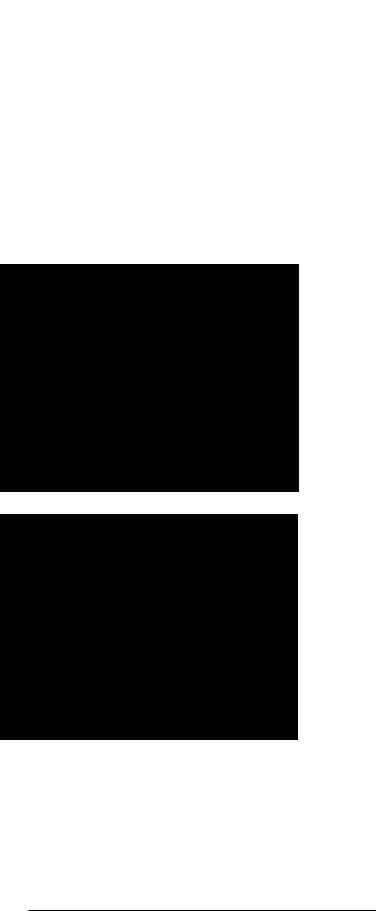
DISASSEMBLY
(1)Drain the oil.
(2)Remove the fan belt and alternator as follows:
(a)Loosen bolt (1) securing fan belt adjusting plate and alternator, and remove fan belt (2).
(b)Remove bolts (1) and (3) and remove alternator.
(3)Remove the starter as follows:
(a)Loosen attaching nuts (1).
(b)Remove starter from rear plate.
(4)Remove the fuel filter as follows:
(a)Disconnect fuel feed pipes (1) (2).
(b)Loosen attaching bolts (3) and remove fuel filter
(4).
- 8 -
(5)Remove the injection pipes and injection nozzles as follows:
(a)Loosen connectors (1) and disconnect injection pipes (2).
(b)Remove fuel return pipe (3) by loosening union nut.
(c)Loosen nuts (4) and remove fuel leak-off pipe (5).
(d)Remove nozzle assemblies.
(6) Remove the lube oil pipe from injection pump.
(7)Remove the water pump pulley and crankshaft pulley as follows:
(a)Loosen water pump shaft nut (1) and remove water pump pulley (2).
(b)Loosen crankshaft nut (3) and remove crankshaft pulley (4).
(8)Remove the timing gear case.
(9)Remove the rocker cover.
-9-

(10)Disconnect the water pump bypass hose and oil pipe. To disconnect bypass hose, displace thermostat elbow and water pump clamp.
(I 1) Remove the water pump as follows:
(a)Loosen attaching bolts (1).
(b)Remove water pump assembly (2).
(12)Remove the rocker shaft assembly as follows:
(a)Loosen union nut (1).
(b)Loosen short bolts (2) and long bolts (3).
(c)Remove rocker shaft assembly (4).
(d)Remove oil pipe (5) and "0" rings (2 pcs - to be replaced with new ones).
(e)Remove valve push rods and valve caps.
(f)Remove intake manifold.
(13)Remove the cylinder head assembly as follows:
(a)Loosen cylinder head bolts (1).
(b)Remove cylinder head and gasket.
-10-
(14)Remove the oil pan and oil pump assembly as follows:
(a)Loosen attaching bolts and remove oil pan (1) and gasket.
(b)Loosen attaching bolts and remove oil pump (2) assembly.
(15)Remove the timing gear train as follows:
(a)Loosen idler gear bolt (1).
(b)Remove thrust plate (2) and idler gear (3). (Draw idler gear while twisting it in the direction of its helix.)
(c)Loosen injection pump drive gear nut (4).
(d)Remove injection pump drive gear (5).
(16) Remove the camshaft assembly as follows:
Take out camshaft assembly (1) from crankcase.
[NOTE]
There are tappets in crankcase; this makes it !}ecessary to turn crankcase upside down when removing camshaft assembly.
(17) Remove the front plate and injection pump |
• |
.. |
... ~...... . |
@l . , |
|||
assembly as follows: |
|
||
(a) Loosen attaching bolts (1). |
|
||
(b) Remove front plate and injection pump |
|
|
|
assembly. |
|
|
|
-11-
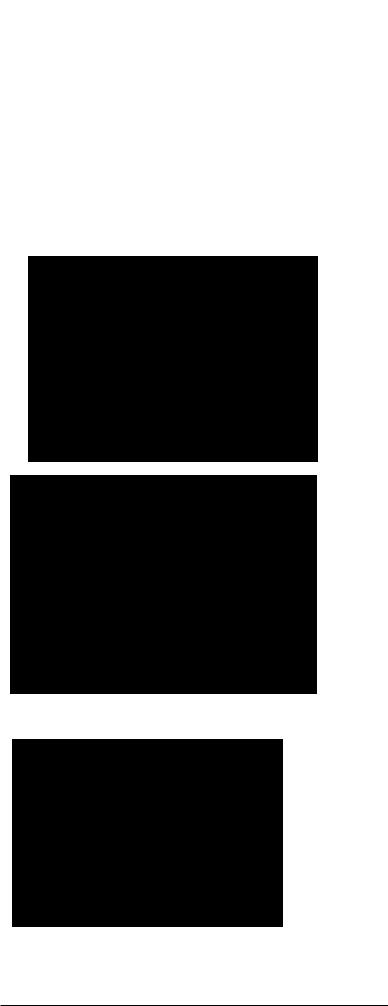
(18) Remove the flywheel and rear plate.
(19)Remove the connecting rod bearing caps and bearings (lower shells) by loosening attaching bolts.
(20) Remove the connecting rods and pistons.
(21)Remove the main bearing caps by loosening attaching bolts.
-12 -
(22) Remove the crankshaft.
(23) Remove the main bearing shells.
(24)Disassemble piston and connecting rod as follows:
(a)Remove compression rings (1) and oil ring (2) by using piston ring tool (A).
(b)Remove oil ring spring.
(c)Remove snap rings (3) by using snap ring tool
(B).
-13-
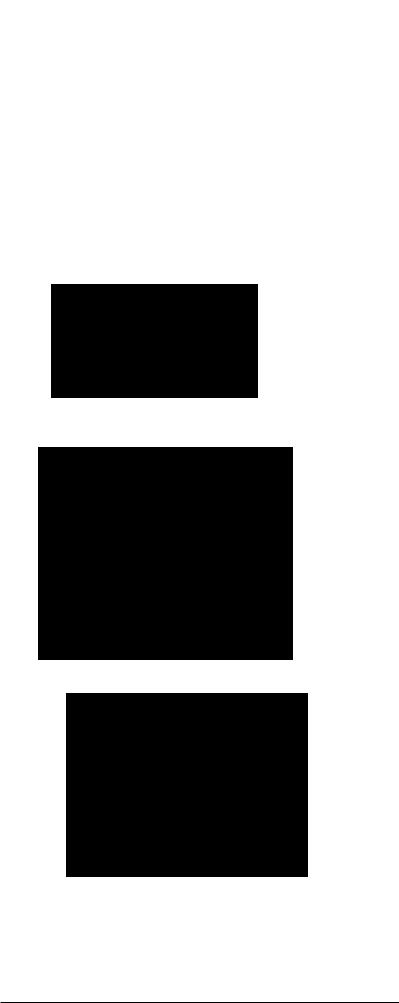
(d)Remove piston pin (4) by using drift (C).
(e)Remove piston pin bushing and connecting rod bearing (upper).
(25)Disassemble the rocker shaft assembly as follQws:
(a)Remove snap rings on both ends (1).
(b)Remove rocker assembly (2).
(c)Remove rocker bracket (3).
(d)Remove rocker assembly (4).
(e)Remove spring (5).
(26)Disassembly the cylinder head as follows:
(a)Remove nozzle holders.
(b)Remove glow plugs (l).
(c)Loosen bolts (2) securing exhaust and intake manifolds.
(d)Remove exhaust manifold (3).
(e)Loosen thermostat cover bolts and remove thermostat cover (4).
(f)Remove thermostat (5).
-14-
(g)Remove valve cotters (6).
(Depress valve spring by valve lifter.)
(h)Remove retainer (7).
(i)Remove valve spring (8).
G)Take out valve (9).
(k)Remove valve guide by using valve guide remover (A).
lO-Valve guide |
A-Valve guide remover |
ll-Cy Ii nder head |
|
-15 -
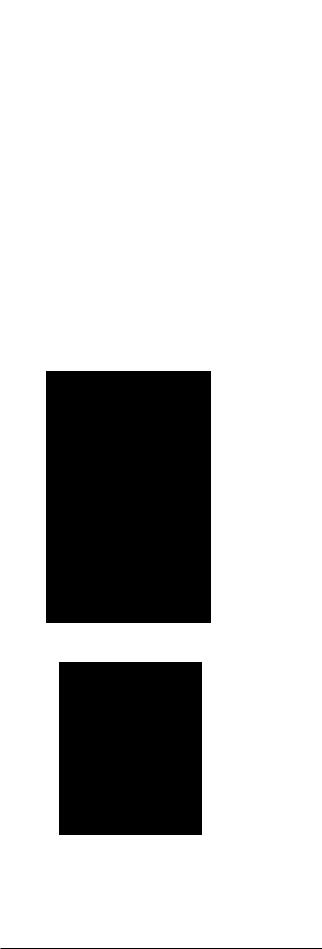
INSPECTION AND REPAIR
Cylinder head
(1)Inspection
Check the gasketed surface of the cylinder head for flatness by using a straightedge and thickness gauge as in the case of checking the crankcase surfaces. This check is to be made with the precombustion chamber jets removed.
Use a surface grinder to reface the cylinder head, as necessary, to the specified flatness.
Specifications |
Unit: mm (in.) |
||
|
|
|
|
Item |
Standard |
Repair limit |
|
|
|
|
|
Warpage of gasketed |
O.OS,max |
0.20 |
|
surface of cylinder |
|||
(0.0020) |
(0.0079) |
||
head |
|||
|
|
||
|
|
|
|
B-
L...::t=---.....--_....~ ...·F
I
o
Checking cylinder head gasketed surface for flatness
(2)Precombustion chamber jet replacement
Do not remove the jets unless they have to be replaced. To remove the jet as when cracks are noted in it, drive it out with a drift pin of about 6 mm
0/4 in.) diameter inserted through glow plug hole, as shown.
Removing precombustion chamber jet
A·lntake port |
C·Jet |
© |
B-Exhaust port |
|
|
Direction of precombustion chamber jet orifice in installed state
-16 -
Valve guides and valve seats
(1)Check each valve for carboning, burning, wear or other defect on head; also check cap end and stem for cracks. Replace the valve if damaged.
(2)Check each valve guide for wear. Remember, the guide wears down more rapidly at its both ends than at any other parts. Measure the inside diameter of the guide at its ends and at its middle part in two directions. Measure the outside diameter of each valve stem. If the measurement exceeds the repair limit in Table below, replace the valve guide.
(3)Valve face and valve seat
Check valve face and valve seat for wear and contact. If valve face is found excessively worn, reface it by using a valve refacer. To reface the valve, proceed as follows:
,(
,
,
,
) .
~: :~
Wear on valve guide
|
|
|
|
Specifications |
Unit: mm (in.) |
|
|||||||||
|
|
|
|
|
|
|
|
|
|
||||||
|
|
|
|
|
|
|
|
|
|
|
|
|
|
|
|
|
|
Item |
|
|
Standard |
|
|
|
|
Repair |
|
|
|||
|
|
|
|
|
|
|
|
|
|
||||||
|
|
|
|
|
|
|
|
limit |
|
|
|||||
|
|
|
|
|
|
|
|
|
|
|
|
|
|
|
|
|
Clearance |
Intake |
|
0.055 -0.OS5 |
|
|
|
0.15 |
|
|
|||||
|
(0.00217 -0.00335) |
(0.0059) |
|
|
|||||||||||
|
of valve |
|
|
|
|
|
|||||||||
|
|
|
|
|
|
|
|
|
|
|
|
|
|
||
|
stem in |
Exhaust |
0.070-0.105 |
|
|
|
0.20 |
|
|
||||||
|
valve guide |
(0.00276-0.00413) |
(0.0079) |
|
|
||||||||||
|
|
|
|
|
|
|
|
|
|
|
|
|
|
|
|
|
Valve guide |
|
|
|
|
|
18 ± 0.3 |
|
|
|
|
|
|
|
|
|
|
|
|
|
|
|
|
|
|
|
|
|
|||
|
|
|
|
|
|
|
|
|
|
|
|
|
|||
|
length out- |
|
|
|
(0.709 ± 0.012) |
|
|
|
|
|
|
|
|||
|
|
|
|
|
|
|
|
|
|
|
|||||
|
side hole |
|
|
|
|
|
|
|
|
|
|
|
|
|
|
|
|
|
|
|
|
|
|
|
|
|
|
|
|
|
|
|
|
|
|
|
|
|
|
S -0.045 |
|
|
|
-0.10 |
|
|
|
|
|
|
|
|
|
|
|
-0.060 |
|
|
|
|
|
||
|
|
|
Intake |
(0315 -0.00177) |
|
(-0.0039) |
|
|
|||||||
|
|
|
|
|
|
||||||||||
|
Valve stem |
|
|
|
. |
-0.00236 |
|
|
|
|
|
|
|
||
|
|
|
|
|
|
|
|
|
|
|
|||||
|
|
|
|
|
|
|
|
|
|
|
|
|
|
||
|
diameter |
|
|
|
|
|
8 -0.060 |
|
|
|
-0.15 |
|
|
||
|
|
|
|
|
|
|
|
-0.080 |
|
|
|
|
|
||
|
|
|
Exhaust |
|
|
|
|
|
|
|
|||||
|
|
|
|
|
|
|
|
|
|
||||||
|
|
|
(0315 -0.00236) |
|
|
(-0.0059) |
|
|
|||||||
|
|
|
|
|
|
|
|
|
|
||||||
|
|
|
|
|
|
. |
-0.00315 |
|
|
|
|
|
|
|
|
|
|
|
|
|
|
|
|
|
|
|
|
|
|||
|
|
|
|
|
|
|
|
|
|
|
|
|
|
|
|
|
|
|
|
|
|
|
|
|
Specifications |
|
|
|
Unit: mm (in.) |
||
|
|
|
|
|
|
|
|
|
|
|
|
|
|
|
|
|
|
Item |
Nominal |
Standard |
Repair |
|
Service limit |
|
|||||||
|
|
|
value |
limit |
|
|
|||||||||
|
|
|
|
|
|
|
|
|
|
|
|
||||
|
|
|
|
|
|
|
|
|
|
|
|
|
|
||
|
|
|
|
|
|
|
|
|
|
|
|
|
|
|
|
|
|
Angle |
30° |
|
|
|
|
|
|
n |
|
||||
|
|
|
|
|
|
|
|
|
|
|
|
|
~ |
|
|
Valve |
|
Sinkage |
O.S (0.031) |
±0.2 |
1.3 |
|
|
|
|||||||
|
(±O.OOS) |
(0.051) |
|
|
|
||||||||||
seat |
|
|
|
|
|
|
|
|
|
|
|
||||
|
|
|
|
|
|
|
|
|
|
|
|
|
~~~ ~I~am |
||
|
|
Width |
1.4 (0.055) |
|
±0.14 |
1.6 |
|
|
C:J~ |
~ |
Face i |
||||
|
|
|
|
|
|
|
|
|
|
||||||
|
|
|
(±0.005S) |
(0.063) |
|
Valve seat~ tValve sinkage 1 |
|||||||||
|
|
|
|
||||||||||||
|
|
|
|
|
|
|
|
|
|
||||||
|
|
|
|
|
|
|
|
|
|
|
|||||
|
|
|
|
|
|
|
|
|
|
Reface up to |
|||||
Valve margin |
1.7 (0.067) |
|
|
1.2 |
|
angle |
l |
Counterbore |
Valve margin |
||||||
|
|
|
|
|
|
|
|
|
|
(0.047) |
|
|
|
|
|
|
|
|
|
|
|
|
|
|
|
|
|
|
|
|
|
-17 -
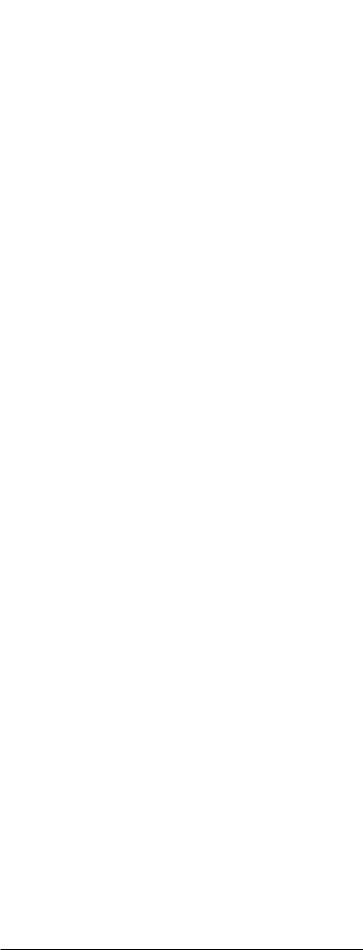
Valve refacer
(a)Set a valve refacer to an angle of 45 degrees.
(b)Grind the valve stock to a minimum and, if the margin is less than 1.2 mm (0.047 in.), replace the valve.
Valve seat cutter
Repair an excessively worn valve seat by using a valve seat grinder or valve seat cutter.
(c)When using a valve seat cutter, exercise care so as to apply a uniform pressure to valve seat to prevent uneven cutting. After cutting, reface the seat by rotating the cutter with No. 400 sandpaper put between the cutter and seat.
(d)If valve seat width is overcut, repair it using a 30-degree cutter. If valve seat width exceeds
1.6mm (0.063 in.) due to wear, rep.lace the seat. Also replace the seat when valve sinkage exceeds 1.3 mm (0.051 in.).
Valve seat installation
Chill the valve seat inserts in ether or alcohol containing dry ice. Heat the cylinder head to a temperature of 80°C to 100°C (176°p to 212°p). Press the inserts in the cylinder head by using the insert calking tools (3069102700 for intake valve, 30691-02800 for exhaust valve). Leave the cylinder head and the inserts in the air until shrinkage-expansion fit is obtained between the two. Calk around the inserts with the insert calking tool to machine the seat width.
(NOTE]
The insert calking tool may be used both for pressing and calking the valve seat inserts by reversing the calking ring.
-18 -

'Valve springs
Inspect each spring for cracks, and check it for squareness, free length and as-installed length against these specifications:
Specifications |
Unit: mm (in.) |
||
|
|
||
|
|
|
|
Item |
Standard |
|
Repair |
|
limit |
||
|
|
|
|
Valve spring free length |
48.85 |
|
47.6 |
(·1.9232) |
|
(1.874) |
|
|
|
||
|
|
|
|
Valve spring squareness |
1.5°, max |
|
|
|
|
|
|
Load compress spring to |
19 ± 1 |
|
15 |
initial working lenfth |
|
||
[43 mm (1.69 in.) |
(41.9 ± 2.21) |
(33.08) |
|
kg(lb) |
|
|
|
|
|
|
|
Checking valve spring
Checking valve spring for squareness
Exhaust manifold
If the flange faces are warped by more than 0.2 mm (0.0079 in.) when checke<;l as shown, grind them smooth and flat. If any flange is found cracked, replace the manifold_
Checking exhaust manifold flange surface for flatness
-19 -
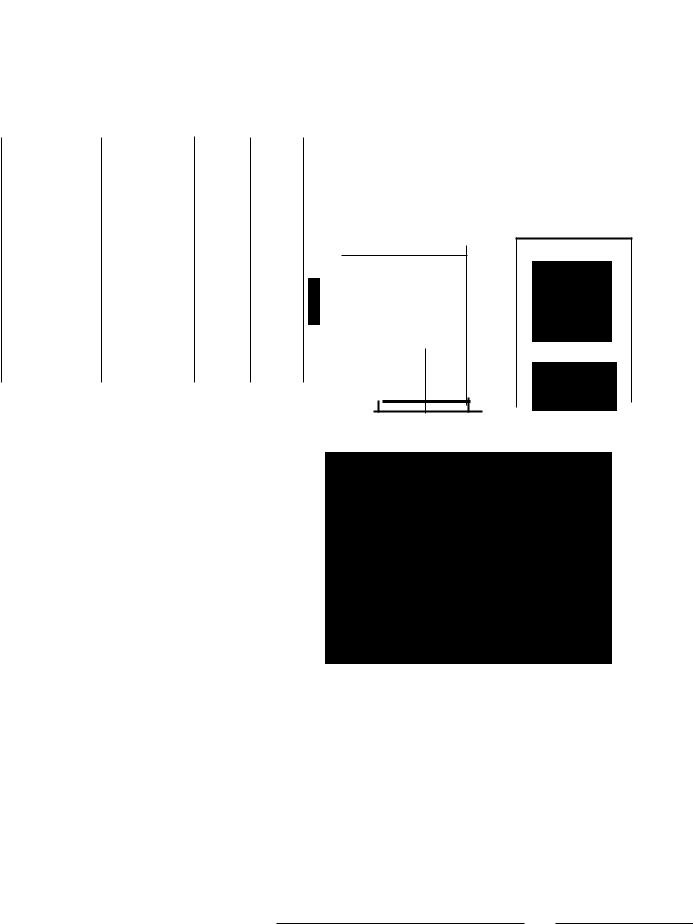
Cylinder sleeves
(1)Using a cylinder gauge, take ID measurements in two directions (parallel and transverse to crankshaft axis) on each cylinder sleeve, at three places indicated below.
If wear reaches the repair limit, rebore the sleeve to the next specifted oversize.
|
Specifications |
Unit: mm (in.) |
||
|
|
|||
|
|
|
|
|
Item |
Standard |
Repair |
Service |
|
limit |
limit |
|||
|
|
|||
|
|
|
|
|
|
84 +0.035 |
|
|
|
|
0 |
+0.20 |
0.70 |
|
Cylinder sleeve ID (3.307 +g.00138) |
(+0.008) |
(0.0276) |
||
|
|
Out of |
0.1 |
roundness |
(0.004), |
|
max |
|
0.015 |
Taper |
(0.0006), |
|
max |
|
|
I
Taking ID measurements on cylinder sleeves
Crlnkcase gaske,ed surfKe
|
oJ, |
|
|
|
|
|
|
|
|
|
|
|
|
|
|
|
0111 |
(0.43i |
1 |
|
.:) |
|
|
|
~~' |
r 2 |
|
|
|
||
|
|
|
|||||
|
|
|
|
3 |
|
|
|
|
|
|
|
|
|
|
|
|
|
|
|
|
|
|
|
'.
Positions for checking sleeve bore diameter
(2)There are three oversizes for cylinder sleeves, namely, +0.25 mm (0.0098 in.), +0.50 mm (0.0197 in.) and +0.75 mm (0.0295 in.). The tolerance to which the sleeves should be refinished by boring is 0 - 0.035 mm (0.0014 in.). When the sleeves are rebored, oversize pistons and piston rings should be used.
(3)An oversize to which any sleeve worn taper and/or out of round is to be rebored should be determined by relying on the most worn part of the sleeve. A cylinder sleeve whose abnormal wear is 0.4 mm (0.0157 in.) should be rebored to 1 mm (0.0394 in.) oversize, for example.
(NOTE] |
Removing ridge with ridge reamer |
a)All cylinders should be rebored to one and the same oversize.
b)When the sleeves are not worn beyond the repair limit, but the piston rings have to be renewed, correct stepped wear on the top part of the sleeve by using a ridge reamer and, if necessary, refinish the sleeves by honing.
-20 -
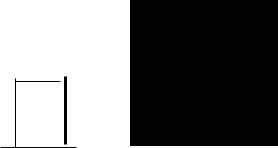
(4)When the sleeves are worn beyond the service limit, or when any cylinder bore is found to be defective, the sleeve should be replaced with a new one.
When the inside surfaces of one of more cylinder bores in the crankcase are found to be defective, it is necessary to refinish the bores by boring. In this case, too, the liners should be replaced with new ones. To replace, proceed as follows:
(a) Removal
eFix a boring machine to the crankcase in alignment with the cylinder bore from which a sleeve is to be removed. Aligning should be made at the bottom part of the liner where less abnormal wear has occurred.
•Bore the sleeve until it reaches 0.5 mm (0.0197 in.) in stock thickness.
•Break the sleeve, exercising care not to damage the inside surface of the cylinder bore.
(b) Installation
It Visually check the inside surfaces of the cylinder bores for condition. It is necessary to rebore the bores if they are damaged.
eWhen it is unnecessary to reb ore the cylinder bores, proceed as in steps below.
•Measure. the diameter of cylinder bore and the outside diameter of sleeve. Select oversize sleeve so that the clearance between the sleeve and the bore is 0.08 mm (0.0031 in.) to 0.145 mm (0.0057 in.).
Heat the crankcase to about 300°C (572°F). Press the sleeve into the bores in the crankcase by using a hydraulic press in such a manner to make the top of sleeve protrude by 0.3 to 0.5 mm (0.012 to 0.020 in.) from the crankcase. Then, finish them to be flush with the crankcase.
After pressing the sleeves, rebore and hone them to
th |
em |
t |
a |
84 +0.035 |
(3307 +0.0014. ) |
||
|
|
0 |
mm. |
0 |
tn .. |
||
Pressing sleeve
•When it is necessary to rebore the cylinder bores, press the sleeves into position as in b above, and proceed as follows:
Prepare 0.5 mm (0.0197 in.) oversize cylinder sleeves.
Rebore the cylinder bores so that the clearance between the sleeve and the bore is 0.08 mm
(0.0031 in.) to 0.145 mm (0.0057 in.).
After pressing the sleeves, rebore and hone them to
|
th |
em |
t |
a |
84 +0.035 |
|
(3307 +0.0014. |
) |
|
||||||
|
|
|
0 |
|
|
mm. |
0 |
m.. |
|||||||
|
|
|
|
|
|
|
Specifications |
|
Unit· mm (in ) |
||||||
|
|
|
|
|
|
|
|
|
|
|
|
|
|
|
|
|
Cylinder sleeve |
|
|
|
|
Sleeve |
|
|
|
|
|||||
|
|
|
boring dimension |
|
|
|
|||||||||
|
|
|
|
|
|
|
|
|
|
|
|||||
|
|
|
|
|
|
|
|
|
|
|
|||||
|
Standard |
|
|
87 -0.010 (3 425 -0.0004) |
|
||||||||||
|
|
|
|
-0.045 |
. |
-0.0018 |
|
||||||||
|
|
|
|
|
|
|
|
|
|||||||
|
|
|
|
|
|
|
|
|
|
|
|
||||
|
0.5 -oversize |
|
875-0.010 |
(3 445 -0.0004) |
|
||||||||||
|
|
|
. -0.045 |
. |
-0.0018 |
|
|||||||||
|
|
|
|
|
|
|
|
|
|||||||
|
When replacing the sleeves, use the sleeves of the |
||||||||||||||
|
following part numbers. |
|
|
|
|
|
|
|
|||||||
|
|
|
|
|
|
|
Specifications |
|
Unit: mm (in.) |
||||||
|
|
|
|
|
|
|
|
|
|
|
|
||||
|
Part No. |
|
|
|
0.0. |
|
|
|
1.0. |
|
Remarks |
||||
|
|
|
|
|
|
|
|
|
|
|
|
|
|||
|
|
|
|
|
87+0 .10 |
|
83.5 |
0 |
|
|
|
||||
30607-50301 |
|
+0.07 |
|
-0.2 |
|
Standard |
|||||||||
(3 425 +0.0004) |
(3.287_0. |
|
|||||||||||||
) |
|
|
|||||||||||||
|
|
|
|
|
. |
+0.0028 |
|
|
0 008 |
|
|
|
|||
|
|
|
|
|
875+0.10 |
|
|
|
0 |
|
|
|
|||
30607-50401 |
. |
+0.07 |
|
83.5 -0.2 |
|
Oversize |
|||||||||
(3445 +0.0004) |
|
|
0 |
|
|||||||||||
|
|
|
|
|
|
|
|
|
|
||||||
|
|
|
|
|
(3.287 -0.008) |
|
|
||||||||
|
|
|
|
|
. |
+0.0028 |
|
|
|||||||
|
|
|
|
|
|
|
|
|
|
|
|
|
|
|
|
-21-

Pistons and piston rings
(1)Pistons
Inspect each piston for any abnormal wear of its sliding surface, for cracks at the crown and for evidence of melting or fusion. Examine the ring grooves for stepped wear and sloped wear. Replace pistons found in bad condition.
(2)Measure the outside diameter of piston in two directions perpendicular to each other. If the diameter exceeds the service limit, replace the piston.
|
|
|
Specifications |
|
Unit: mm (in.) |
|||||
|
|
|
|
|
|
|
|
|||
|
|
|
|
|
|
|
|
|
|
|
|
Item |
|
|
|
Standard |
|
|
Service |
||
|
|
|
|
|
|
limit |
||||
|
|
|
|
|
|
|
|
|
|
|
|
|
|
|
|
|
|
|
|
|
|
|
Standard |
|
83.90 (3.3031) |
|
|
|
||||
|
|
|
|
|
|
|
|
|
|
|
|
0.25 (0.0098) |
|
84.15 (3.3130) |
|
|
|
||||
Diameter |
oversize |
|
|
|
|
|||||
|
|
|
|
|
|
|
-0.2 |
|||
|
|
|
|
|
|
|
|
|
||
(at skirt) |
0.50 (0.0197) |
|
84.40 |
(3.3228) |
|
(-0.008) |
||||
|
oversize |
|
|
|
|
|||||
|
|
|
|
|
|
|
|
|
||
|
|
|
|
|
|
|
|
|
|
|
|
0.75 (0.0295) |
|
84.65 (3.3327) |
|
|
|||||
|
|
|
|
|||||||
|
oversize |
|
|
|
||||||
|
|
|
|
|
|
|
|
|
||
|
|
|
|
|
|
|
|
|
|
|
-22-

(3)Replacing pistons
Replace the piston with a new one if the measurement exceeds the service limit. Where any pistons have to be replaced, the variance in weight among the pistons must not exceed the limit. It is recommended that cylinder number be stamped on a piston selected to be used in a particular cylinder for convenience.
When the cylinder sleeves are bored to the oversize, pistons and piston rings of the same oversize
should be used. There are three oversizes for pistons and piston rings, namely, +0.25 mm (0.00984 in.), +0.50 mm (0.01969 in.) and 0.75 mm (0.0295 in.). The variance in weight among the pistons per engine should be ±5 grams (±0.18 oz), max.
(4)Piston riD& gaps
Check the ring gap with a thickness gauge by placing the ring in a new cylinder sleeve, and pushing the pistOll true and square in the bore.
Front of engine
t
Pilton _ight
Piston weight marking
Piston ring |
Gap |
Checking piston ring gap
|
Specifications |
Unit: mm (in.) |
|||
|
|
|
|
||
|
|
|
|
|
|
Item |
|
|
|
Standard |
Service |
|
|
|
limit |
||
|
|
|
|
|
|
|
|
|
|
|
|
Piston ring gap |
|
|
|
0.30 ~0.50 |
1.5 |
|
|
|
|||
|
(0.0118 ~ 0.0197) |
(0.059) |
|||
|
|
||||
|
|
|
|
|
|
(5) Piston ring grooves
Insert the compreuion and oil rings of known thicknesses into the grooves, and measure the side clearance with a straightedge and thickness gauge@.
|
|
|
|
Measuring piston ring groove |
||
|
|
|
Specifications |
|
|
|
|
|
|
|
Unit· mm (in ) |
|
|
|
|
Item |
|
Standard |
Repair |
|
|
|
|
limit |
|
||
|
|
|
|
|
|
|
|
|
|
|
|
|
|
Fit in ring |
No.1 compression |
|
0.050 ~ 0.085 |
0.20 |
|
|
ring |
|
(0.00197 ~ 0.00335 |
(0.0079) |
|
||
grooves |
|
|
|
|
|
|
|
No.2 compression ring |
0.025 ~ 0.060 |
0.15 |
|
||
|
|
|
||||
|
|
Oil ring |
|
(0.00098 ~ 0.00236) |
(0.0059) |
|
|
|
|
|
|||
|
|
|
|
|
|
|
-23 -
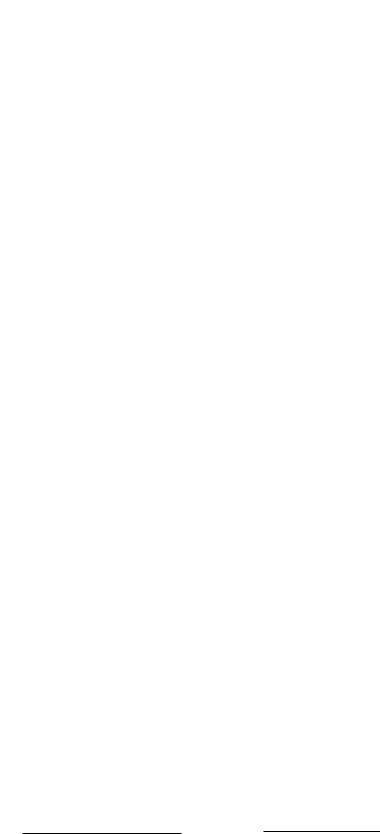
(6)Replacing piston riDp
If the rings are replaced, the gap width will exceed the standard value, but this is not a matter of concern, provided that the service limit is not exceeded.
(7)Piston pin bosses
Check the piston pin bosses by referring to the topic, Piston pins, piston pin bosses and piston pin bushings, which follows.
Piston pins, piston pin bosses and piston pin bushings
(1)Check the pin clearance in the pin boss of the piston by computing the difference between the two diameter readings, one taken on the pin and the other in the boss. If the computed difference (clearance) exceeds the repair limit, replace the piston pin with a new one.
|
Specifications |
Unit: mm (in) |
|||
|
|
|
|||
|
|
|
|
|
|
Item |
|
Standard |
|
Repair |
|
|
|
limit |
|||
|
|
|
|
||
|
|
|
|
|
|
Piston pin |
|
0 |
|
|
|
|
25 -0.006 |
|
|
|
|
diameter |
|
(0.984_8.00024 ) |
|
|
|
|
|
|
|
||
|
|
|
|
|
|
(2)('heck the clearance of the pin in the bushing fitted to the small end of the connecting rod by computing the difference between the two dia· meter readings. If the computed difference (clearance) exceeds the repair limit, replace the pin or the bushing whichever is badly worn.
|
Specifications |
|
|
|
|||
|
|
|
|
Unit· mm (in |
) |
||
|
Item |
|
|
Standard |
Repair |
|
|
|
|
|
limit |
|
|
||
|
|
|
|
|
|
||
|
Piston pin boss |
|
25 -8.006 |
|
|
|
|
|
|
|
|
|
|||
|
ID |
|
(0.984 -8.00024) |
|
|
|
|
|
|
|
|
|
|
||
|
|
|
|
|
|
|
|
|
Piston pin clear- |
|
0-0.016 |
0.05 |
|
|
|
|
ance in piston |
|
|
|
|||
|
|
|
|||||
|
|
(0 - 0.00063) |
(0.0020) |
|
|
||
|
pin boss |
|
|
|
|||
|
|
|
|
|
|
|
|
|
|
|
|
|
|
|
|
|
|
|
|
|
|
|
|
|
Piston pin |
|
25 +0.020 |
|
|
|
|
|
|
·+0.045 |
|
|
|
||
|
bushingID |
|
+0.00079 |
|
|
|
|
|
|
|
(0.984 +0.00177 ) |
|
|
|
|
|
|
|
|
|
|
|
|
|
Piston pin clearance |
|
0.020 - 0.051 |
0.08 |
|
|
|
|
|
(0.00079 - |
|
|
|||
|
in piston pin bushing |
|
(0.0031) |
|
|
||
|
|
0.00201) |
|
|
|||
|
|
|
|
|
|
||
|
|
|
|
|
|
|
|
Miking piston pin bushing and piston pin
-24-
Connecting rod alignment and bearings
(l)Check the connecting rod for evidence of cracks, especially cracks in the fillets of its small and big ends. Replace the rod if any cral:k is noted in the fillets.
(2)Mount each connecting rod in the connecting rod aligner and check for bend and twist as shown
below. In a twisted connecting rod, the bearing is not trued to the small end bushing. Such a rod must be corrected with the use of a press.
(3)If the connecting rod aligner is not available, the rod may be checked as follows:
(a)To check the rod for bend, measure "c" and
"2" as shown in the figur~ "a." If the measurement at "c" is larger than 0.05 mm per 100 mm
(0.00197 in. per 3.937 in.) of" 2," straighten the rod with the use of a press.
(b)To check the rod for twist, measure "c" as shown in the figure "b." If the measurement at "C" is larger than 0.05 mm per 100 mm (0.00197 in. per 3.937 in.) of "2," correct the rod.
f <0.05 t 100
a. Checking the connect· |
b. Checking the connect· |
ing rod for bend |
ing rod for twist |
Checking connecting rod
Checking connecting rod for bend
Checking connecting rod for twist
-25 -

(4) To |
~he.:k the |
rod with a piston, pla~e the rod on |
the |
surfa~e |
plate as shown below, insert a |
round bar of the ~rankpin diameter into and |
||
through its big end bore, and take measurement |
||
at "A" and "B." The differen.:e between the two |
||
measurements |
tel1s the straighteness of the rod. |
|
When one or more, or all connecting rods are to be repla~ed, sele~t new rods so that the variance in weight among the rods is within the value given in the spedfication.
Specification
Unit: gram (oz)
Variance in weight among connecting rods
A |
B |
// |
/ |
Checking connecting rod on surface plate
(5)Check the connecting rod end playas follows:
Check each connecting rod for end play in the manner illustrated, with the cap bolts tightened to 5.5 kg-m (39.8 lb-ft). Use a thickness gauge to measure the end play (which is the clearance between big end and crank arm). If the clearance measured exceeds the service limit, replace the connecting rod or bearing.
|
Specifications |
Unit: mm (in.) |
|
|
|
|
|
||
|
|
|
|
|
Item |
Standard |
|
Service |
|
|
limit |
|
||
|
|
|
|
|
|
|
|
|
Checking end play of connecting rod |
Connecting rod |
0.15 -- 0.35 |
|
0.50 |
|
|
|
|||
end play |
(0.0059"" 0.0138) |
|
(0.0197) |
|
|
|
|
|
|
(6)Check the bearings as follows:
(a)Inspect each bearing for evidence of wiping or fatigue failure, for scratches by dirt particles imbedded in and for improper seating on the bore. Determine whether the bearing should be re-used or replaced on the basis of fmdings.
(b)Check the radial clearance between crankpin and bearing; if the repair limit speCified below is exceeded by the checked clearance, replace the bearing. Where the crankpin is to be ground to the next undersize, use a replacement bearing of that undersize.
The two bearing undersizes are 0.25 mm (0.00984 in.) and 0.50 mm (0.01969 in.).
-26-
